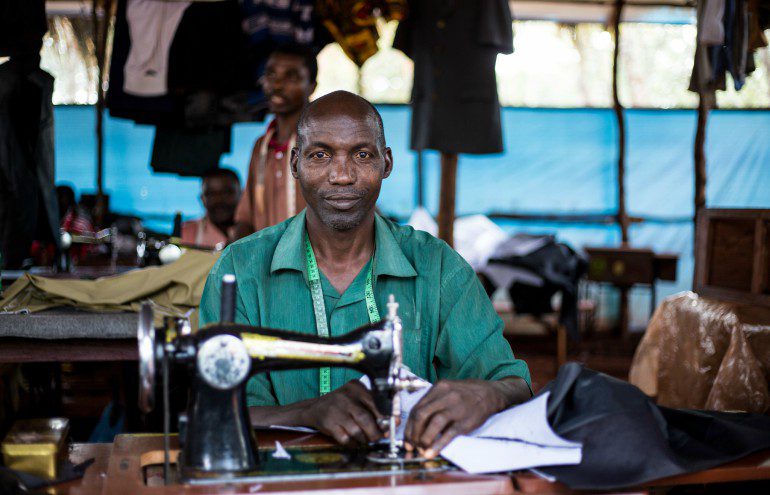Leading Tailor Perth Services: Tailoring Solutions for Perfect Fits
Leading Tailor Perth Services: Tailoring Solutions for Perfect Fits
Blog Article
Comprehending the Tailoring Refine: From Textile Option to Final Fitting for the Suitable Closet
The tailoring procedure is an intricate interplay of art and scientific research, starting with the crucial decision of material option and culminating in the accurate changes of last fittings. Each material kind brings special qualities that influence not only the visual charm however likewise the garment's longevity and viability for various events.
Importance of Fabric Selection
Picking the appropriate fabric is crucial in the customizing process, as it straight affects the comfort, toughness, and general visual of the final garment (tailor perth). The selection of textile establishes the foundation for the garment's performance, design, and functionality. Different fabrics possess one-of-a-kind properties, such as weight, breathability, and stretch, which can substantially influence how the garment drapes and fits the body
Additionally, textile selection influences the garment's longevity and ease of care. High-quality fabrics can endure wear and tear, maintaining their appearance and framework gradually, while lower-quality materials may result in pilling or fading. Furthermore, the appropriate material adds to the garment's ability to shift across periods and events, thereby enhancing versatility.
A tailored piece made from an ideal fabric not just showcases workmanship however likewise boosts the user's self-confidence. Consequently, recognizing the subtleties of material selection is critical for any customizing undertaking. It ensures that the last item not just meets the aesthetic wishes of the customer yet also aligns with functional needs, consequently attaining a harmonious balance in between form and feature in the tailored closet.
Sorts Of Fabrics and Their Usages
Recognizing the numerous kinds of fabrics readily available is important for making notified choices throughout the customizing process. Each material possesses unique attributes that dictate its viability for specific garments and events.
Its versatility allows it to be customized right into every little thing from shirts to gowns. Its natural elasticity assists garments preserve form over time.
Silk exudes deluxe and is lightweight, making it perfect for eveningwear and delicate shirts; however, it needs careful handling because of its delicacy. Linen, with its textured surface, is a prominent option for cozy environments, supplying a crisp and airy feeling, but it wrinkles conveniently, which might impact the garment's appearance.
Synthetic materials, such as polyester and nylon, offer toughness and resistance to wrinkles, making them ideal for day-to-day wear and active clothing. Comprehending these fabric kinds and their properties permits far better decision-making, guaranteeing that each customized piece not only fits well however also aligns with the desired purpose and event.
The Tailoring Strategies Discussed
The art of tailoring relies upon a range of strategies that transform material right into well-fitted garments. Central to this procedure is pattern composing, where a dressmaker produces themes based upon the customer's measurements and wanted design. This preliminary action ensures that the garment will fit the user properly before any kind of cutting occurs.
As soon as patterns are established, cutting strategies enter play. Precision is extremely important as mistakes can lead to misfitting garments. Tailors typically use numerous click for source cutting techniques, such as single-layer cutting for elaborate designs and multiple-layer reducing for efficiency on common patterns.
Basting is another essential strategy, permitting tailors to briefly sew textile assemble for an initial installation. This technique provides the possibility to assess the drape and overall shape before final stitching.
Seaming strategies, including flat-felled seams and French joints, boost the garment's durability and aesthetic charm. Tailors likewise utilize techniques such as Going Here interfacing and cushioning to provide structure and form to specific areas, like shoulders and collars.
Last but not least, finishing methods, including hemming and edge finishing, make sure the garment's longevity while offering a refined look. Together, these methods create the backbone of effective tailoring, resulting in exquisite, custom-fit apparel.
Suitable Modifications and Considerations

Trick considerations include the shoulder fit, which should neither sag neither limit motion, and the sleeve size, which ought to enable comfortable arm activity while preserving a polished appearance. Furthermore, changes at the waist can fine-tune the silhouette, with choices to allow out or take in fabric as needed.
The rise of trousers is an additional crucial variable; it must sit conveniently over the hips without causing discomfort, permitting for convenience of motion. Hemming sizes for both trousers and skirts must reflect the wearer's favored style while respecting percentages.

Preserving Your Tailored Apparel
Always comply with the care tag directions, which might advise completely dry cleaning for delicate fabrics or device washing for even more long lasting products. Stay clear of constant laundering, as this can use down the fabric and modify the garment's form.
Storage space is just as important; usage cushioned wall mounts for jackets and coats to maintain shoulder structure, and shop trousers folded up neatly or hung to stop creasing. Shield garments from straight sunlight, which can discolor colors and damage fibers.
Furthermore, regular assessments for small repair services can avoid bigger issues. Examine for loose switches, fraying joints, or indications of moth damage, resolving these issues immediately to keep the garment's integrity.
Finally, consider seasonal turning. Putting on tailored pieces in moderation enables textiles to recuperate, expanding their lifespan. By implementing these upkeep methods, you can make certain that your customized garments remain as immaculate as the day you initially used them, enhancing your excellent closet for many years ahead.
Final Thought
The tailoring i loved this process, including material choice, competent methods, and specific suitable adjustments, plays an important role in creating garments that improve both comfort and design. Each stage adds to the overall effectiveness of the end product, making certain that garments not just fits well however likewise reflects specific identification. Comprehending the relevance of maintenance extends the life of tailored garments, solidifying their worth in a well-curated wardrobe. An extensive approach to customizing finishes in a positive and sleek appearance.
Choosing the right material is critical in the tailoring procedure, as it directly influences the comfort, toughness, and overall aesthetic of the last garment. The option of fabric establishes the structure for the garment's performance, style, and performance. Different materials have special homes, such as stretch, weight, and breathability, which can significantly influence just how the garment drapes and fits the body.
The art of customizing relies on a range of strategies that transform material into well-fitted garments.The customizing process, encompassing textile choice, skilled strategies, and precise fitting changes, plays a critical duty in creating garments that boost both comfort and design.
Report this page